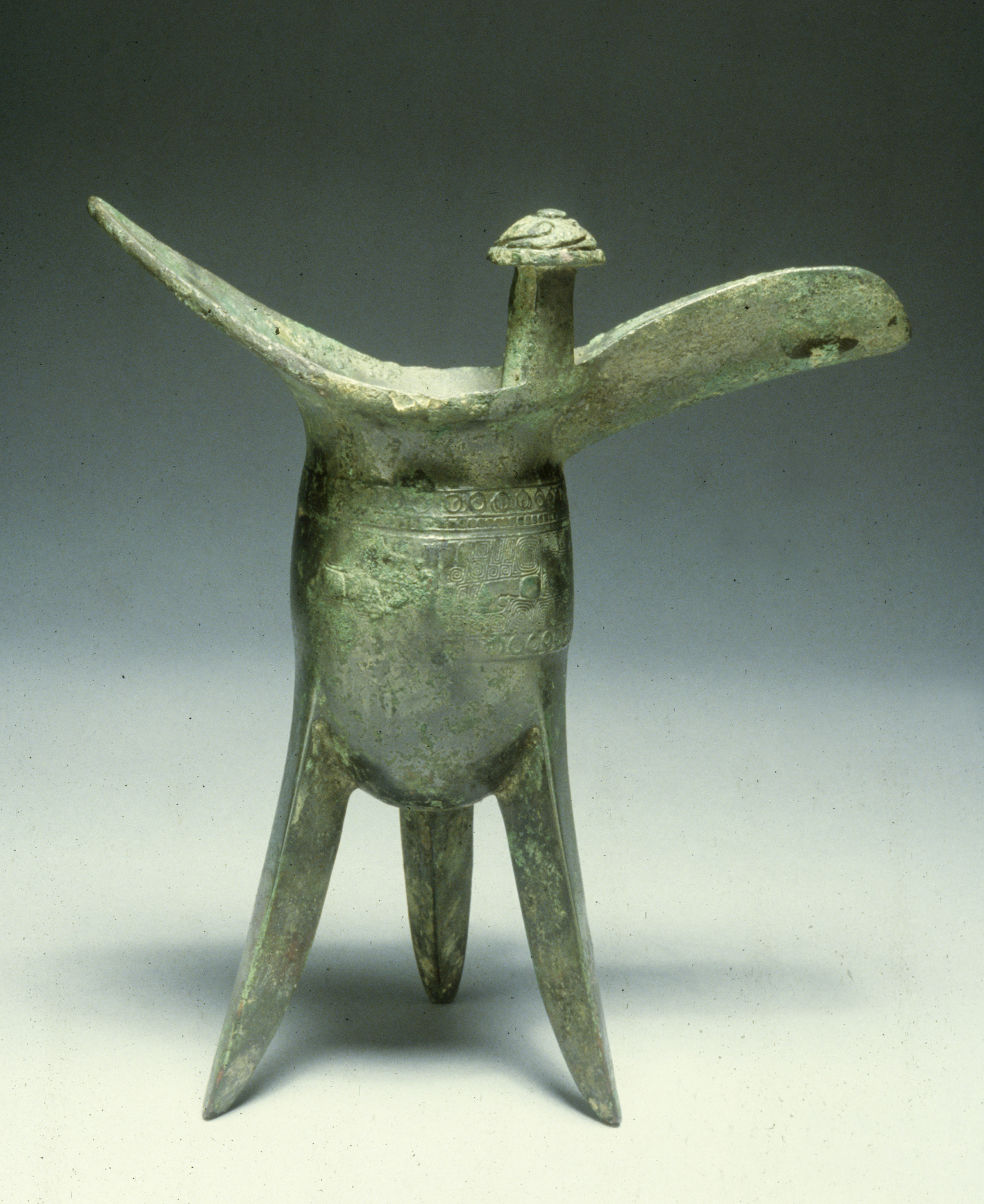Ritual Wine Vessel (Jue)
(China )
For rituals, wine was served warm. The two spouts on this vessel were used to pour the warm wine into cups.
Some of the earliest belief systems in China included communicating with spirits and worshipping ancestors. Later, the philosophies and religions of Confucianism, Daoism, and Buddhism contributed their respective teachings and rituals. The interplay between these traditions over time helped define Chinese society and culture. Many rituals and ceremonies took place at an altar (in temples or homes)—it was at the altar where the human world, the natural world, and the supernatural worlds connected. So the objects that were placed on a ritual altar possess meaning and significance. The practice of conducting rituals at the altar continued in China through the Qing dynasty (1644–1911).
Provenance
Provenance (from the French provenir, 'to come from/forth') is the chronology of the ownership, custody, or location of a historical object. Learn more about provenance at the Walters.
Yamanaka Sale, Collection of a Chinese nobleman from Tientsin, American Art Association, January 29,1914, no. 120; Henry Walters, Baltimore, 1914, by purchase; Walters Art Museum, 1931, by bequest.
Geographies
China (Place of Origin)
Measurements
H: 8 1/16 × W: 7 1/2 × D: 4 1/4 in. (20.5 × 19.1 × 10.8 cm)
Credit Line
Acquired by Henry Walters, 1914
Accession Number
In libraries, galleries, museums, and archives, an accession number is a unique identifier assigned to each object in the collection.
In libraries, galleries, museums, and archives, an accession number is a unique identifier assigned to each object in the collection.
54.2184


